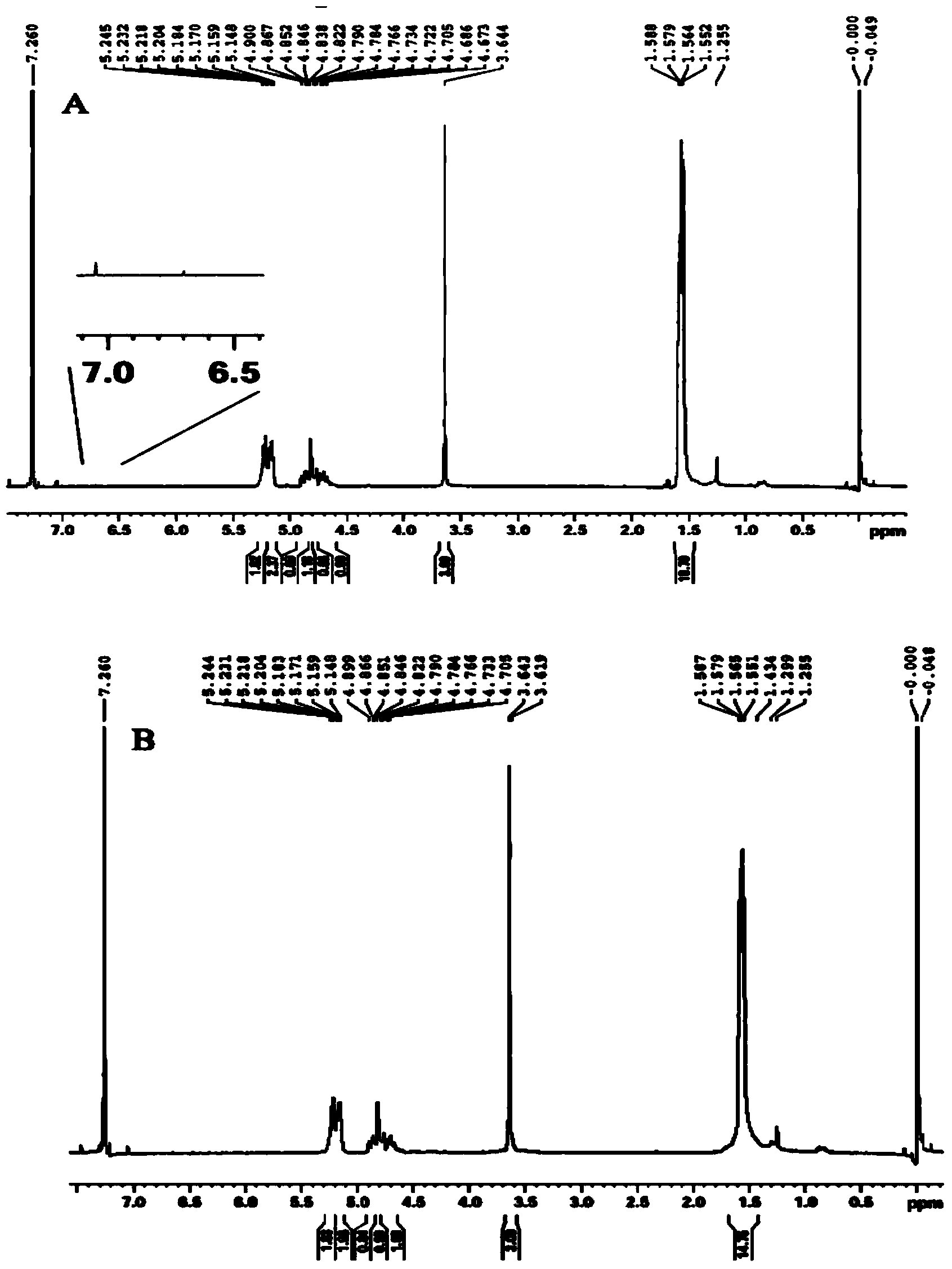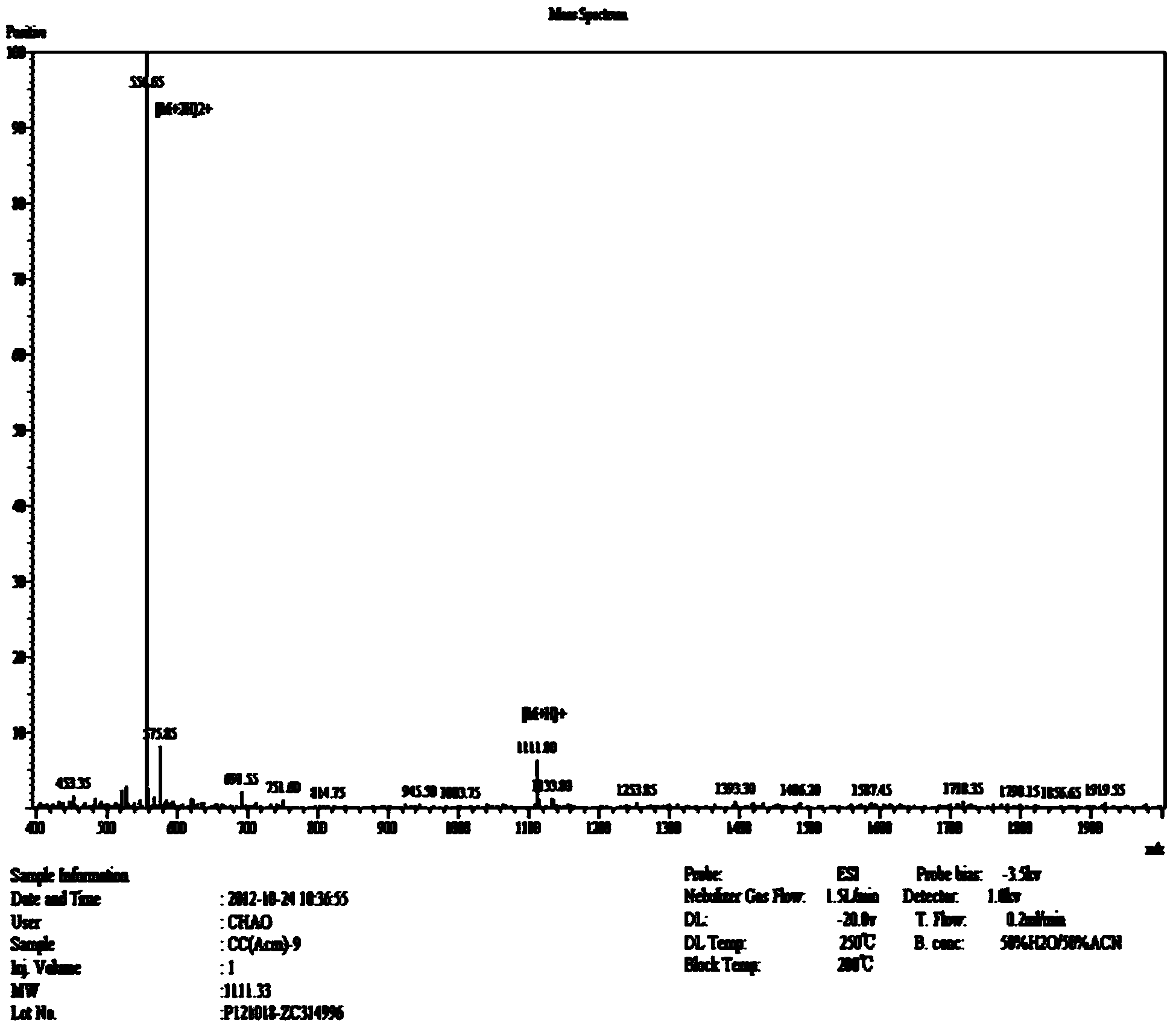Pep-1 peptide modified gliomas targeted nano drug delivery system and preparation method thereof
A technology of glioma and pep-1, applied in the direction of anti-tumor drugs, pharmaceutical formulations, medical preparations with non-active ingredients, etc., can solve the problem of single function
- Summary
- Abstract
- Description
- Claims
- Application Information
AI Technical Summary
Problems solved by technology
Method used
Image
Examples
Embodiment 1
[0040] Example 1: Synthesis of Pep-PEG-PLGA
[0041] Weigh 20mg Mal-PEG(3500)-PLGA(38000), dissolve it in 2mL DMF, add dropwise to 8mL phosphate buffer (pH: 7.0), and stir to form a nanoparticle solution. Weigh the Pep-1 (Acm) polypeptide and dissolve it in 2 mL of phosphate buffer (pH: 7.0). Add the polypeptide solution dropwise to the nanoparticle solution (the molar ratio of Male to Pep-1 (Acm) is 1:3) , Nitrogen protection, stirring, reaction for 12h. The nanoparticle solution after the reaction is dialyzed to remove unreacted polypeptides. Add 1 mL of acetic acid to the dialyzed nanoparticle solution, add dropwise a proper amount of iodine in methanol solution, protected by nitrogen, and react for 0.5 hours. After the reaction, the nanoparticle solution is dialyzed and lyophilized to obtain Pep-PEG-PLGA.
Embodiment 2
[0042] Example 2: Emulsification / solvent evaporation method
[0043] Add 1mg PTX and MePEG(2000)-PLGA(38000): Pep-PEG-PLGA(38000)=9:1 to ethyl acetate to dissolve, add an appropriate amount of 1% poloxamer 188 aqueous solution, and intermittently ultrasonic (200W, 5min) form an oil-in-water (O / W) emulsion, disperse it into an appropriate amount of 0.5% poloxamer 188 aqueous solution, stir, rotate and evaporate at 40°C to remove ethyl acetate, filter with 0.45μm and 0.22μm microporous membranes respectively, Get nanoparticles.
[0044] The nanoparticle solution is clear in appearance and has obvious blue opalescence. The laser particle size analysis showed that the obtained nanoparticles showed a normal distribution with an effective diameter of 94.25nm and a polydispersity of 0.117. Observed under a scanning electron microscope, the nanoparticles have a regular spherical appearance, are well dispersed in the solution, and have good stability. The nanoparticle encapsulation rate ...
Embodiment 3
[0045] Example 3: Solvent diffusion method
[0046] Add 1mg PTX and MePEG(2000)-PLGA(38000): Pep-PEG-PLGA(38000)=9:1 to acetone to dissolve, add dropwise to an appropriate amount of 1% poloxamer 188 aqueous solution, stir, 50℃ The acetone was removed by rotary evaporation and filtered with 0.45μm and 0.22μm microporous membranes respectively to obtain nanoparticles.
[0047] The appearance of the nanoparticles is clear, with obvious blue opalescence. Laser particle size analysis shows that the obtained nanoparticles have a normal distribution with 106.45nm as the effective diameter, and the polydispersity is 0.165. Observed under a scanning electron microscope, the nanoparticles have a regular spherical appearance, are well dispersed in the solution, and have good stability. The nanoparticle encapsulation rate was 23.4%, and the drug loading was 1.14%.
PUM
 Login to View More
Login to View More Abstract
Description
Claims
Application Information
 Login to View More
Login to View More - R&D
- Intellectual Property
- Life Sciences
- Materials
- Tech Scout
- Unparalleled Data Quality
- Higher Quality Content
- 60% Fewer Hallucinations
Browse by: Latest US Patents, China's latest patents, Technical Efficacy Thesaurus, Application Domain, Technology Topic, Popular Technical Reports.
© 2025 PatSnap. All rights reserved.Legal|Privacy policy|Modern Slavery Act Transparency Statement|Sitemap|About US| Contact US: help@patsnap.com



